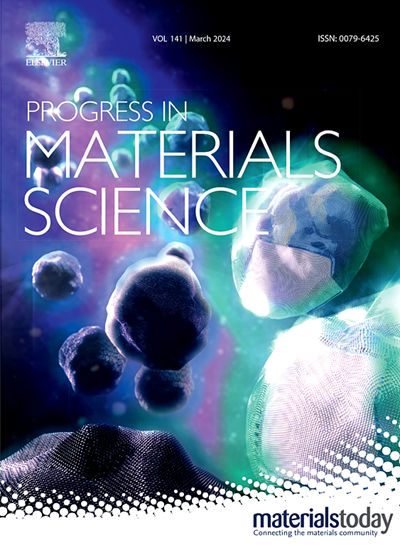The wide range of battery systems: From micro- to structural batteries, from biodegradable to high performance batteries
IF 40
1区 材料科学
Q1 MATERIALS SCIENCE, MULTIDISCIPLINARY
引用次数: 0
Abstract
Battery systems are essential components of the on-going energy transition and digitalization of society. With the need to power an increasing variety of portable and stationary systems, ranging from disposable point-of-care devices or smart packaging systems to applications in portable computers and electric cars, an increasing variety of batteries and battery systems are being developed, each aiming to specific sets of required performance parameters, including energy and power density, cycling stability, flexibility, degradability, environmental impact or improved integration into the specific application context.
This work analyzed the state of the art of the different materials and geometries, performance parameters and applications of the different battery systems.
We discuss the rationale behind each material selection, the processing technologies and the integration into the specific application, taking into account the whole life-cycle of the battery. Further, the main challenges posed for each battery type will provide a roadmap for their successful development and application.


广泛的电池系统:从微型电池到结构电池,从可生物降解电池到高性能电池
电池系统是正在进行的能源转型和社会数字化的重要组成部分。从一次性护理设备或智能包装系统到便携式电脑和电动汽车的应用,越来越多的便携式和固定系统需要供电,越来越多的电池和电池系统正在开发中,每种电池和电池系统都针对所需的特定性能参数集,包括能量和功率密度、循环稳定性、灵活性、可降解性、环境影响或改进集成到特定应用程序上下文。这项工作分析了不同材料和几何形状的最新技术,不同电池系统的性能参数和应用。考虑到电池的整个生命周期,我们讨论了每种材料选择背后的基本原理,加工技术以及与特定应用的集成。此外,每种电池类型所面临的主要挑战将为它们的成功开发和应用提供路线图。
本文章由计算机程序翻译,如有差异,请以英文原文为准。
求助全文
约1分钟内获得全文
求助全文
来源期刊

Progress in Materials Science
工程技术-材料科学:综合
CiteScore
59.60
自引率
0.80%
发文量
101
审稿时长
11.4 months
期刊介绍:
Progress in Materials Science is a journal that publishes authoritative and critical reviews of recent advances in the science of materials. The focus of the journal is on the fundamental aspects of materials science, particularly those concerning microstructure and nanostructure and their relationship to properties. Emphasis is also placed on the thermodynamics, kinetics, mechanisms, and modeling of processes within materials, as well as the understanding of material properties in engineering and other applications.
The journal welcomes reviews from authors who are active leaders in the field of materials science and have a strong scientific track record. Materials of interest include metallic, ceramic, polymeric, biological, medical, and composite materials in all forms.
Manuscripts submitted to Progress in Materials Science are generally longer than those found in other research journals. While the focus is on invited reviews, interested authors may submit a proposal for consideration. Non-invited manuscripts are required to be preceded by the submission of a proposal. Authors publishing in Progress in Materials Science have the option to publish their research via subscription or open access. Open access publication requires the author or research funder to meet a publication fee (APC).
Abstracting and indexing services for Progress in Materials Science include Current Contents, Science Citation Index Expanded, Materials Science Citation Index, Chemical Abstracts, Engineering Index, INSPEC, and Scopus.
 求助内容:
求助内容: 应助结果提醒方式:
应助结果提醒方式:


